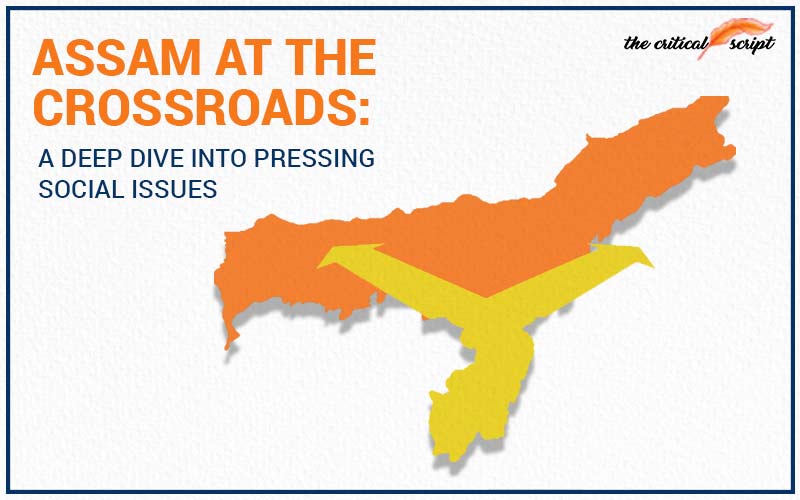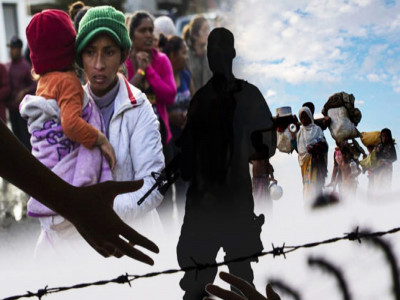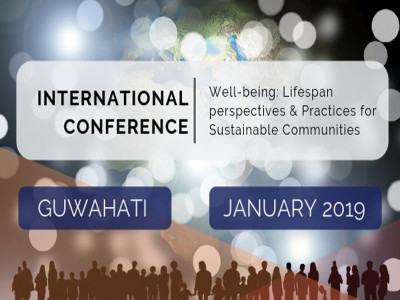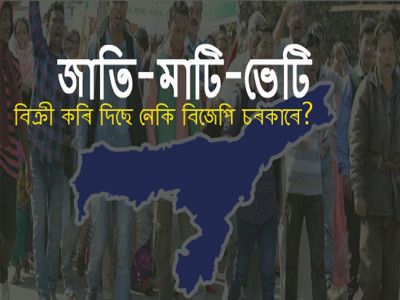
Assam at the Crossroads: A Deep Dive into Pressing Social Issues
Assam, nestled in the Northeastern
region of India, is a state rich in cultural diversity, natural resources, and
a unique historical tapestry. However, beneath this vibrant façade lie several
pressing social issues that have been shaping the socio-economic landscape of
the state. This essay delves into some of these critical challenges, supported
by recent data and developments.
Rising Unemployment Among Educated Youth
Unemployment remains a
significant concern in Assam, particularly among educated youth. The Economic
Survey of Assam for 2023–24 highlighted a startling increase in the number of
educated job seekers. Registrations at employment exchanges surged from 1.37
lakh in 2021 to nearly 10 lakh in 2022, marking a sevenfold increase. This
surge underscores the growing demand for employment opportunities that align
with the aspirations and qualifications of the youth.
(Source: Economic Survey of
Assam 2023–24)
The mismatch between
educational qualifications and available job opportunities has led to
underemployment and frustration among the youth. Addressing this issue requires
a multifaceted approach, including the promotion of skill development programs,
encouragement of entrepreneurship, and the attraction of investments to create
job opportunities within the state.
Mental Health Challenges Stemming from
Cyberbullying
The advent of digital
technology has brought about new challenges, notably cyberbullying, which has
significantly impacted the mental health of Assam's youth. A joint study by
UNICEF and the National Service Scheme (NSS) revealed that approximately 95% of
young people in Assam have experienced mental health issues due to
cyberbullying and corporal punishment. The study further indicated that nearly
60% of the surveyed youth reported that such experiences adversely affected their
social relationships, while 24% faced stress, anxiety, and fear.
This alarming statistic
calls for immediate action, including the implementation of comprehensive
digital literacy programs, the establishment of support systems for victims,
and stringent enforcement of laws against cyberbullying to safeguard the mental
well-being of the youth.
Human-Elephant Conflict
Assam’s rich biodiversity
includes a significant population of wild elephants. However, rapid
deforestation and habitat encroachment have led to increased human-elephant
conflicts. In response, conservation groups have developed innovative solutions
such as the "Haati App" (Elephant App), which alerts residents about
the presence of elephants near human settlements, allowing them to avoid
dangerous encounters. Despite these efforts, between 2019 and 2023, elephants
were responsible for 2,829 human fatalities in India, with 629 deaths in 2022
alone.
Mitigating this conflict
necessitates a balanced approach that includes habitat restoration, community
engagement in conservation efforts, and the development of early warning
systems to protect both human lives and elephant populations.
Illegal Mining and Occupational Hazards
Illegal mining practices,
particularly "rat-hole" mining, have been a persistent issue in
Assam, leading to fatal accidents and environmental degradation. In January
2025, a tragic incident occurred in the Umrangso area, where nine miners were
trapped in a flooded coal mine. Rescue operations faced significant challenges
due to the depth of the mine and water levels. After 44 days, the bodies of
five missing miners were recovered, highlighting the perilous working
conditions associated with illegal mining activities.
Addressing this issue requires
stringent enforcement of mining regulations, provision of alternative
livelihoods for those dependent on illegal mining, and rehabilitation of
affected areas to prevent environmental degradation.
Flood
Assam, one of India’s most
flood-prone states, experiences three to four flood waves annually, affecting
approximately 40% of its land area. In 2022, floods impacted 5.6 million
residents across 32 districts, leading to the displacement of 4.7 million
people and damaging over 108,000 hectares of cropland.
The average annual economic
loss due to floods is around ₹200 crore, with significant spikes in years like
1998 (₹500
crore) and 2004 (₹771 crore).
(waterresources.assam.gov.in)
These recurrent floods
result in loss of life, widespread displacement, destruction of property, and
disruption of livelihoods, exacerbating socio-economic challenges and hindering
the state's development.
Plight of Refugees and Stateless Persons
Assam has been a focal
point for refugee influxes, particularly the Rohingya Muslims and Christian
Chin refugees from Myanmar. In September 2024, over 100 Rohingya and 30
Christian Chin refugees initiated a hunger strike protesting their indefinite
detention at the Matia Transit Camp in Assam. Despite holding UNHCR-issued
cards, these refugees faced prolonged detention, leading to calls for their
release and resettlement.
This situation underscores
the need for a humane and legally sound approach to handling refugees and
stateless persons, ensuring their rights are protected in accordance with
international conventions.
Environmental Conservation and Community
Engagement
Assam's environmental
landscape is under threat from deforestation and industrial activities.
However, communities like the villagers of Barekuri have showcased exemplary
coexistence with wildlife. In this village, residents live harmoniously with
endangered hoolock gibbons, India’s only ape species. Despite challenges such
as habitat loss due to deforestation and pollution, the community’s efforts
highlight the potential of grassroots conservation initiatives.
Such models of community
engagement are vital for biodiversity conservation and can serve as blueprints
for other regions facing similar challenges.
Drug Abuse in Assam
Assam is grappling with a
significant drug abuse problem, leading to severe health crises. In 2023–24,
7,274 HIV-positive cases were detected, with 65% linked to injecting drug
users.
The Assam government has
intensified its anti-drug campaign, resulting in the seizure of narcotics worth
Rs 2,100 crore over the past three years.
Despite these efforts,
challenges persist, as high-profile traffickers remain elusive and addiction
rates continue to rise.
The government has also
launched the ‘Drug-Free Assam’ app to encourage public reporting of
drug-related activities. Additionally, there has been a notable increase in
drug seizures, including 56.6 kg of heroin and 10,665.5 kg of ganja between
April 2016 and July 2024, in line with initiatives like "War Against
Drugs."
These initiatives
underscore the state’s commitment to combating the drug menace and safeguarding
public health.
Child Marriage
Child marriage has been a
significant social issue in Assam, with 31.8% of women reportedly married
before the age of 18. To combat this, the Assam government initiated a
stringent crackdown in 2023, resulting in over 3,000 arrests. This legal action
led to an 81% reduction in child marriage cases across 20 districts between
2021–22 and 2023–24.
Additionally, the
‘MukhyaMantrirNijutMoinaAsoni’ scheme was launched to financially support
approximately one million girl students, aiming to keep them in school and
deter early marriages.
These combined efforts
underscore the state’s commitment to eradicating child marriage and empowering
young girls through education and legal measures.
Insurgency
Assam has experienced
significant insurgency challenges over the past few decades. These insurgencies
have primarily stemmed from ethnic, regional, and political grievances among
various groups seeking autonomy or independence. Between 1991 and July 2015,
Assam witnessed 9,382 insurgency-related incidents, resulting in the deaths of
5,166 individuals, including 912 security personnel.
The United Liberation Front
of Asom (ULFA), established in 1979, emerged as one of the most prominent
insurgent groups, advocating for Assam’s independence. Over time, other groups,
such as the National Democratic Front of Bodoland (NDFB) and the KarbiLongri
North Cachar Hills Liberation Front (KLNLF), also took up arms.
Decline in Insurgency
Since 2014, there has been
a marked decline in insurgency-related activities in Assam. The Ministry of
Home Affairs reported an 80% reduction in such incidents across Northeast
India. In Assam, incidents decreased from 824 in 2014 to 158 in 2022. This
period also saw the surrender of approximately 6,000 militants from various
groups.
Peace Initiatives and Accords
Several peace accords have
been instrumental in bringing stability to the region:
- Bodo Accord (January 27, 2020): Led to the surrender of 1,615 cadres,
along with arms and ammunition.
- KarbiAnglong Agreement (September 4,
2021): Resolved disputes in
the Karbi regions; over 1,000 armed cadres surrendered.
- Adivasi Groups’ Surrender (September 15,
2022): Eight Adivasi
insurgent groups laid down arms.
- DNLA Ceasefire (April 27, 2023): The Dimasa National Liberation Army
agreed to cease violence.
Witch-Hunting
Witch-hunting has been a
persistent social menace in Assam, deeply rooted in superstitious beliefs and
socio-economic factors. Between 2001 and 2019, at least 161 individuals lost
their lives to such practices, with 133 cases officially registered.
Geographical Prevalence
The practice is notably
rampant across 17 districts, with Kokrajhar recording the highest number of
deaths (45), followed by Chirang (24), and Goalpara (17). Other affected
districts include Tinsukia, Udalguri, Nagaon, Sonitpur, and KarbiAnglong.
Legislative Measures
The Assam Witch Hunting
(Prohibition, Prevention and Protection) Act, enacted in 2015 and given
presidential assent in 2018, classifies witch-hunting as a cognizable, non-bailable,
and non-compoundable offense with penalties extending up to life imprisonment.
Challenges in Enforcement
Many incidents occur in
remote villages, making it difficult to file FIRs, especially when entire
communities are involved. Village headmen are often complicit, resulting in low
conviction rates.
Awareness and Community Initiatives
Project Prahari, initiated
by DGP KuladharSaikia, focuses on community development and alternative
livelihoods to combat superstitions. The initiative operates in over 100 tribal
villages.
Domestic Violence
Domestic violence remains a
pressing concern in Assam. According to NFHS-5, 32% of married women aged 18–49
in the state have experienced spousal violence—higher than the national average
of 29.3%.
(assamtribune.com)
According to NCRB, Assam
recorded a crime rate of 154.3 per 100,000 female population in 2020—the
highest in India for the fourth consecutive year. Specifically, there were
11,408 cases registered under Section 498A of the IPC.
Despite recent declines (14,000+
cases in 2022 vs 26,000+ in previous years), the conviction rate remains low at
just 4.8%.
Education and Healthcare Disparities
Educational Disparities
Assam's literacy rate, as
per the 2011 Census, was 73.18%, slightly below the national average. Dropout
rates remain high, especially in rural areas (over 6% at the primary level and
20.25% at the secondary level). Gender disparity, though reduced, persists.
Healthcare Disparities
Assam has a
doctor-to-population ratio of 1:1,500, below the WHO’s 1:1,000 recommendation.
Only 14.5% of surveyed hospitals have postnatal critical care units.
Hospitalization costs (urban average ₹47,064) and reliance on private healthcare
exacerbate inequities.
Human Trafficking
Assam is a significant hub
for human trafficking. In 2021, the state registered 161 cases, rescuing 279
victims (including 110 children). The state ranked second-highest in 2018 and
remained among the top seven in 2020.
Poverty and lack of
employment make residents vulnerable. The COVID-19 pandemic worsened the
situation.
Conclusion
Assam's social landscape is
a complex interplay of cultural richness and socio-economic challenges.
Addressing these issues requires a holistic approach encompassing economic
development, social justice, environmental conservation, and the preservation
of cultural heritage. Collaborative efforts involving government initiatives,
community participation, and support from non-governmental organizations are
essential to foster a just and equitable society in Assam.
Article contributed by Sahid Hazarika, edited by TCS
Disclaimer: The opinions expressed in this article are those of the author's. They do not purport to reflect the opinions or views of The Critical Script or its editor.

Newsletter!!!
Subscribe to our weekly Newsletter and stay tuned.

















Related Comments